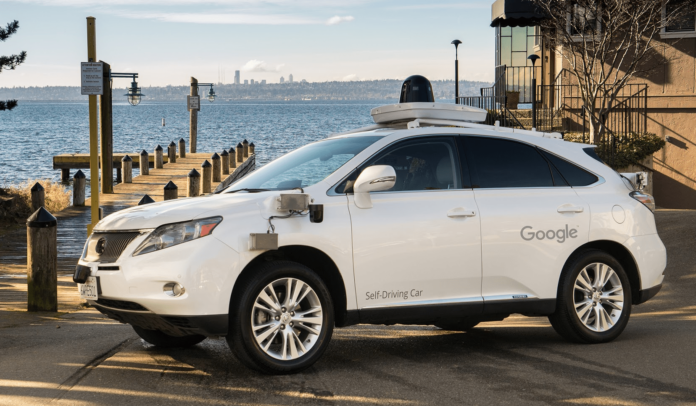Google calls it a learning experience; chalks collision with bus up to sandbags in the road
In pursuit of an autonomous driving future, Google has run its self-driving cars through extensive road testing. But, in a first of its kind accident, one of the Google vehicles was at fault in an accident involving a bus in Mountain View, California, on Feb. 14.
Google tests its vehicles around its Mountain View, California, headquarters, as well as in Austin, Texas, and Kirkland, Washington.
The accident, one of 17 reported to California state officials, is the first time a Google vehicle has been at fault. The Google vehicle was traveling at 2 mph and there were no personal injuries reported. There was slight damage to the Google Lexus SUV, according to reports.
“Our self-driving cars spend a lot of time on El Camino Real, a wide boulevard of three lanes in each direction that runs through Google’s hometown of Mountain View and up the peninsula along San Francisco Bay,” Google noted on the accident. “With hundreds of sets of traffic lights and hundreds more intersections, this busy and historic artery has helped us learn a lot over the years. And on Valentine’s Day we ran into a tricky set of circumstances on El Camino that’s helped us improve an important skill for navigating similar roads.
“El Camino has quite a few right-hand lanes wide enough to allow two lines of traffic. Most of the time it makes sense to drive in the middle of a lane. But when you’re teeing up a right-hand turn in a lane wide enough to handle two streams of traffic, annoyed traffic stacks up behind you. So several weeks ago we began giving the self-driving car the capabilities it needs to do what human drivers do: hug the rightmost side of the lane. This is the social norm because a turning vehicle often has to pause and wait for pedestrians; hugging the curb allows other drivers to continue on their way by passing on the left. It’s vital for us to develop advanced skills that respect not just the letter of the traffic code but the spirit of the road.
“On Feb, 14, our vehicle was driving autonomously and had pulled toward the right-hand curb to prepare for a right turn. It then detected sandbags near a storm drain blocking its path, so it needed to come to a stop. After waiting for some other vehicles to pass, our vehicle, still in autonomous mode, began angling back toward the center of the lane at around 2 mph and made contact with the side of a passing bus traveling at 15 mph. Our car had detected the approaching bus, but predicted that it would yield to us because we were ahead of it.
“Our test driver, who had been watching the bus in the mirror, also expected the bus to slow or stop. And we can imagine the bus driver assumed we were going to stay put. Unfortunately, all these assumptions led us to the same spot in the lane at the same time. This type of misunderstanding happens between human drivers on the road every day.
“This is a classic example of the negotiation that’s a normal part of driving – we’re all trying to predict each other’s movements. In this case, we clearly bear some responsibility, because if our car hadn’t moved there wouldn’t have been a collision. That said, our test driver believed the bus was going to slow or stop to allow us to merge into the traffic and that there would be sufficient space to do that.
“We’ve now reviewed this incident (and thousands of variations on it) in our simulator in detail and made refinements to our software. From now on, our cars will more deeply understand that buses (and other large vehicles) are less likely to yield to us than other types of vehicles, and we hope to handle situations like this more gracefully in the future.”

